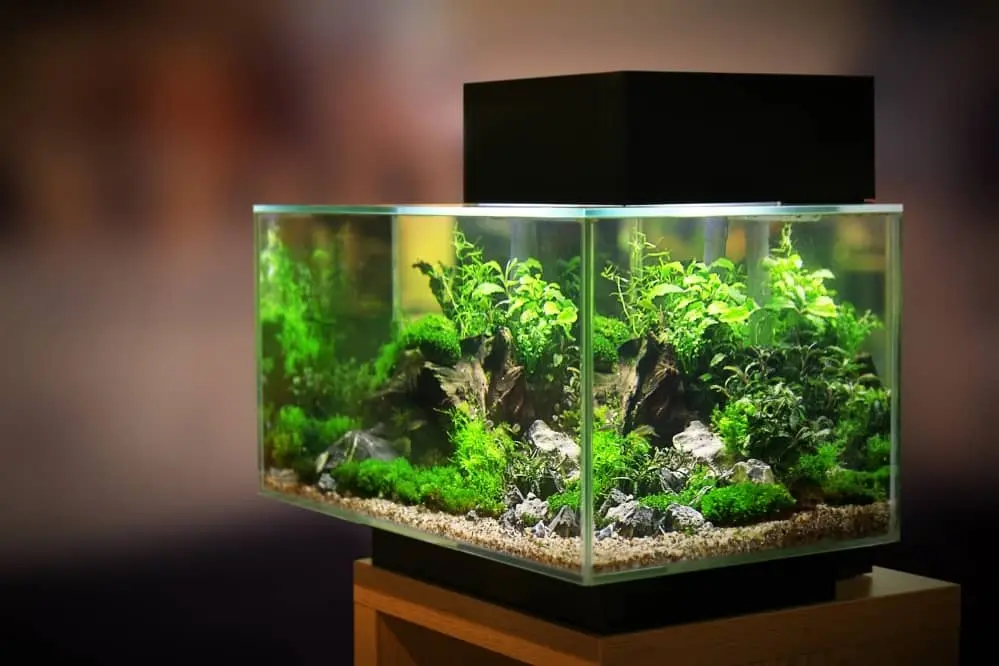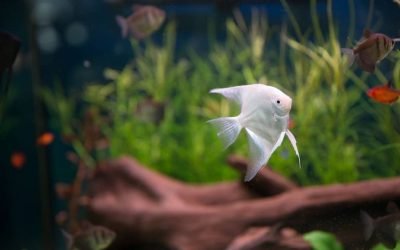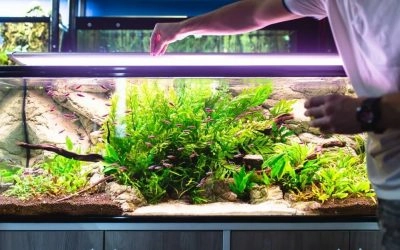How do You Lower the Ammonia Level in a Fish Tank?

One of the most harrowing experiences an aquarium hobbyist can have is an ammonia spike in their tank. In most cases when this happens, it results in the swift death of most fishes and it takes place so rapidly that usually, you only have a few minutes to take some type of remedial action.
Minute quantities of ammonia are always present in aquariums as it is a natural byproduct of the nitrogen cycle. However, in a healthy tank, it quickly gets converted into nitrites and nitrates. In an unhealthy tank, this process does not take place or it does not take place quickly enough leading to an increased concentration of ammonia. When this happens, it is vital to immediately lower ammonia in the fish tank. A lower ammonia aquarium will help the inhabitants of your tank not only survive but thrive in the tank. So, today we will look at how ammonia levels spike in aquariums while also revealing the different ways in which you can reduce the amount of ammonia in your fish tank both in the short term and the long term.
How Does Ammonia Increase In Fish Tanks?
A fish tank isn’t just a place for the fish to live but it is an entire ecosystem in itself. Apart from providing the fish and the other inhabitants with a safe sanctuary, the tank also has to take care of other life processes including waste management.
Fish produce a lot of waste and that along with the uneaten food starts to decay with time. As these waste materials contain nitrogen it breaks down into ammonia. As alluded to earlier, a healthy tank will have something known as the nitrogen cycle. This is the process in which this ammonia is first converted into nitrites by a colony of beneficial bacteria. Another group of bacteria then convert it into nitrates which the fish can tolerate in low concentrations and which can be removed by doing partial water changes once every few weeks.
However, if there is a disruption in this process then it can lead to a build-up of ammonia and any noticeable levels of this compound can be fatal for the fish if it is not bought under control quickly.
Signs Of High Ammonia In Aquarium
While the surest way of knowing if there is high ammonia in your tank is with a testing kit, there are a few tell-tale signs that will let you know beforehand that the ammonia levels are getting out of control. These include the following signs
- Ammonia burns on the fish – The fishes will take on a darker appearance and they will produce more slime. The gills will turn a deep red and in extreme cases, they can start to bleed. The eyes will start to become foggy as well. The fins will also take on a torn and jagged appearance
- Gasping for air – If this happens in a well-aerated tank then it is one of the surest signs that the ammonia level has spiked.
- Haphazard movement of fish – Eventually, the fish will start having trouble swimming and staying upright
- Characteristic Odor – Ammonia has a very distinctive smell and getting close to the water surface will alert you to the presence of ammonia
How To Lower Ammonia In Fish Tank?
There are a few ways to bring high ammonia levels back under control in the short term. These are listed below
50% Or More Water Change
This has to be the first step in ensuring that the fishes do not suffer any more adverse effects. Do a water change that replaces at least half of the water in the tank. After the water change, check for ammonia and see if it is still present. If yes, then do another partial water change, this time replacing 25% of the water. This should bring back the ammonia levels to a value the fish can tolerate for a few hours thus buying you enough time to find a permanent fix.
Adding Cycled Media
An improperly or inadequately working nitrogen cycle is usually the cause of ammonia spikes in aquariums. This tends to happen when there aren’t enough beneficial bacteria in the aquarium. By adding cycled media from another tank that is properly established and no ammonia issues will replenish the colonies of beneficial bacteria allowing the nitrogen cycle to kick into high gear.
Water Conditioner
There are many chemical solutions that are commercially available in fish stores and online that can chemically react with ammonia and convert it into a form that is not harmful to the fish. These usually come with detailed instructions and as long as it’s a reputed brand, it should immediately bring the ammonia level close to zero.
Fixing High Ammonia Issues Permanently
All the aforementioned methods are meant to bring the ammonia levels down in the short term. However, if the root cause for the ammonia spike is not found, the issue will only return often with a vengeance that will only make matters worse. There can be many reasons why a tank can have a high concentration of ammonia and these include
- Improperly Cycled Tank – This mostly happens with new tanks. Always wait for the beneficial bacteria to establish themselves before adding fish. Cycling is as simple as running the aquarium without fish for about three weeks while adding a little fish food every day. Alternatively, you can use a commercially available starter pack that will introduce these bacteria in a quicker manner.
- Too Many Fish – Every aquarium has a predefined capacity of fishes it can accommodate. If this limit is exceeded, the aquarium won’t be able to process the waste quickly enough which will lead to increased production of ammonia. A similar problem can occur if a lot of fish are added in quick succession. Stock your tank in a gradual manner so that the tank has enough time to adjust to the increased load. A general rule of thumb is to have at least one gallon of water for every inch of fish.
- A lot Of Uneaten Food – Overfeeding is another classic mistake that can lead to increased ammonia levels. Only feed enough food that the fish can finish in about two minutes. Remove any uneaten food after about five minutes.
- Dead And Decaying Fish – A dead fish that begins to decay can put too much stress on the bacteria and they won’t be able to cope with the increased ammonia levels. Make sure that any dead fish is removed promptly.
- Underpowered Filtration System – Aquariums require filters that can process at least one and a half times the total volume of water every hour. So, a 100-gallon tank will need a filtration system rated for 150 gallons. Make sure that the filtration system in your aquarium is powerful enough for the volume of water in the tank.
- Improper Maintenance – Every aquarium will require regular upkeep including a partial water change once every two to three weeks. Stick to this schedule to avoid any spike in ammonia.
Conclusion
Keeping a fish tank successfully requires a lot of elements to come together and one of these is the nitrogen cycle. Following the steps above will ensure that you won’t have to lose another fish to high ammonia ever again.




0 Comments